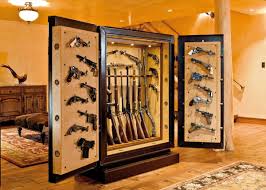Introduction
Vault doors play a crucial role in safeguarding our most valuable possessions. From precious gems to classified documents, these impenetrable structures create a formidable barrier against potential threats. In this article, we will dive into the intricate mechanisms and advanced technologies that make vault doors the epitome of security.
Anatomy of a Vault Door
The Outer Shell: A Fortress in Disguise
Vault doors are often designed to blend seamlessly with their surroundings. The outer shell of these sturdy structures is crafted from heavy-duty materials such as reinforced steel or composite alloys. This robust exterior acts as the first line of defense against unauthorized access.

The Locking System: A Complex Puzzle
Behind the facade lies the intricate locking mechanism, which is the heart and soul of a vault door’s security. These systems employ a series of interlocking bolts, typically made of hardened steel, that extend from the door into the frame when locked. The number and size of these bolts vary depending on the level of security required.
Advanced vault doors utilize high-tech locking systems that incorporate biometric scanners, keypad entry, or even retina recognition. These cutting-edge features ensure that only authorized individuals can gain access, adding an additional layer of protection.
Cracking the Code: The Challenges
Vault doors are designed to withstand a wide array of threats, ranging from brute force attacks to sophisticated manipulation techniques. Let’s explore some of the common challenges faced by those attempting to bypass these formidable barriers:
Physical Attacks: Brawn vs. Steel
One of the primary concerns when it comes to vault door security is physical attacks. These attacks involve trying to force open the door by applying extreme pressure or using heavy tools. However, vault doors are specifically engineered to resist such attacks, making them incredibly difficult to breach.
Manipulation Techniques: A Battle of Wits
Some criminals employ manipulation techniques to crack the code of a vault door. These methods involve meticulously analyzing the locking mechanisms, identifying vulnerabilities, and exploiting them. However, manufacturers continuously enhance their designs to counter these attempts, leaving perpetrators in a constant state of perplexity.
The Future of Vault Door Security
As technology advances, so does the sophistication of vault door security systems. In the future, we can expect even more innovative features designed to thwart potential threats. From biometric advancements to artificial intelligence integration, the possibilities are endless. The goal remains the same – protecting our most treasured possessions from unauthorized access.
Conclusion
Vault doors are the pinnacle of security, employing advanced mechanisms and technologies to protect our valuables. Through their robust construction, complex locking systems, and constant evolution, these impenetrable structures stay one step ahead of those seeking unauthorized access. With vault doors standing guard, our most prized possessions remain safe and secure.
